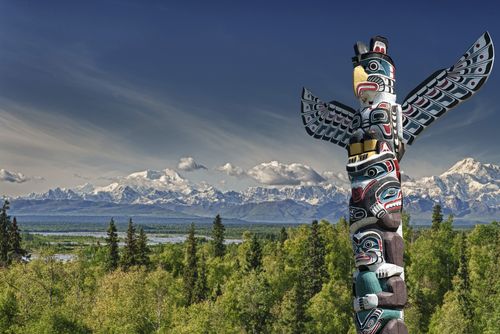 Saying goodbye to a loved one can be one of the most trying challenges a person faces. Due to the finite nature of death, societies throughout history have adopted a variety of interesting customs to honor the departed. While modern Westerners may be used to the concepts of burying or cremating the deceased, there are some international traditions that can seem outlandish or even downright bizarre. Review this selection of funeral practices and learn more about the different ways people send off those who have passed away.
Saying goodbye to a loved one can be one of the most trying challenges a person faces. Due to the finite nature of death, societies throughout history have adopted a variety of interesting customs to honor the departed. While modern Westerners may be used to the concepts of burying or cremating the deceased, there are some international traditions that can seem outlandish or even downright bizarre. Review this selection of funeral practices and learn more about the different ways people send off those who have passed away.
The Haida of North America
Long before the Pacific Northwest became associated with the United States and Canada, the land belonged to the indigenous tribe known as the Haida. The people lived in villages spread across the region and had a few different methods of handling the death of a member of the tribe. Typically, the Haida would dig large pits on the outskirts of their villages and bury their dead in a communal grave. Since the Haida believed in reincarnation, they viewed the burials as a temporary goodbye until the souls of the deceased found their way into newborn members of the tribe.
Those who held an important rank amongst the Haida people received a different burial treatment altogether. When a shaman or chief passed away, the body would be kept indoors for a short period. The members of the tribe would then bring the body outside and smash it with clubs until it was able to fit inside a small box. This container would then be placed inside a totem pole, which was decorated with carvings of prominent figures and animals. These carvings were meant to safeguard the soul of the departed as it underwent the journey of reincarnation.
The Isnag of the Philippines
Across the Philippines, funeral traditions vary greatly from one region to the next. In Apayao, for example, the Isnag people have a custom that many Westerners would find unusual. Instead of burying their dead outdoors, families will dig graves in their homes. The deceased is wrapped in a mat and placed in a casket. Often, family members will place items in the casket that are meant to help the departed in the afterlife, such as weapons, water, and alcohol. The casket is then buried in the kitchen of the home.
The Republic of Kiribati
The Republic of Kiribati is located on a group of islands in the Pacific Ocean. The people of the main island, known as Kiribati, once had a very unique way of honoring their dead. The first part of the tradition followed the format of many funeral customs, with the body being displayed for family and friends to view before it would be buried in a local cemetery. The next part of the process is where the practice stands out.
A few months after the burial, the family would exhume the body of the deceased. The skull of the body would then be removed, polished, painted, and placed in the home of the family. It was also common for the immediate family members of the deceased to take the skull out of the house so that it could travel alongside its loved ones. Once several years had gone by, the skull would be reburied with the body.
The United Kingdom
Taking one’s own life was once considered taboo in the United Kingdom. In fact, those who had died by suicide were not allowed to be buried in traditional cemeteries. People believed the souls of those who died in this manner were incredibly vengeful and dangerous to the living. Therefore, anyone who had died by suicide was buried at a crossroads in an attempt to confuse the spirits.
While there have been endless traditions associated with laying the departed to rest, all share a common theme of attempting to understand death in some way. Though some methods can seem strange, learning about different customs is a great way to gain insight into the biggest mystery all humans must face.
Add Your Comment